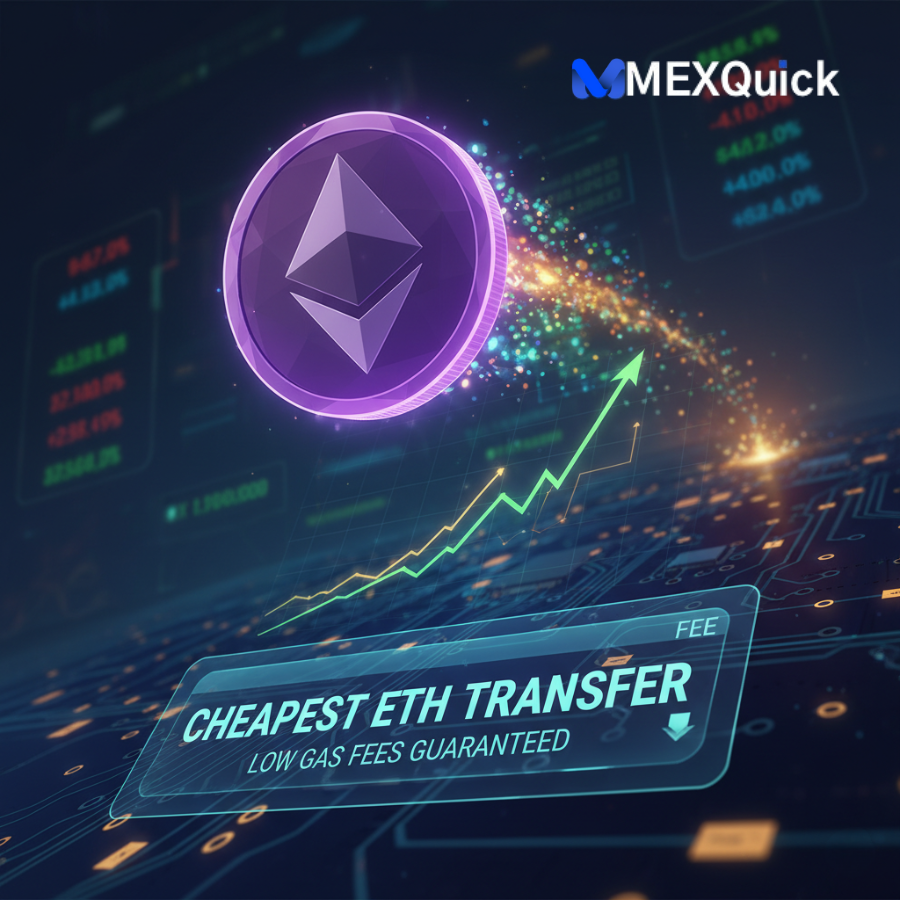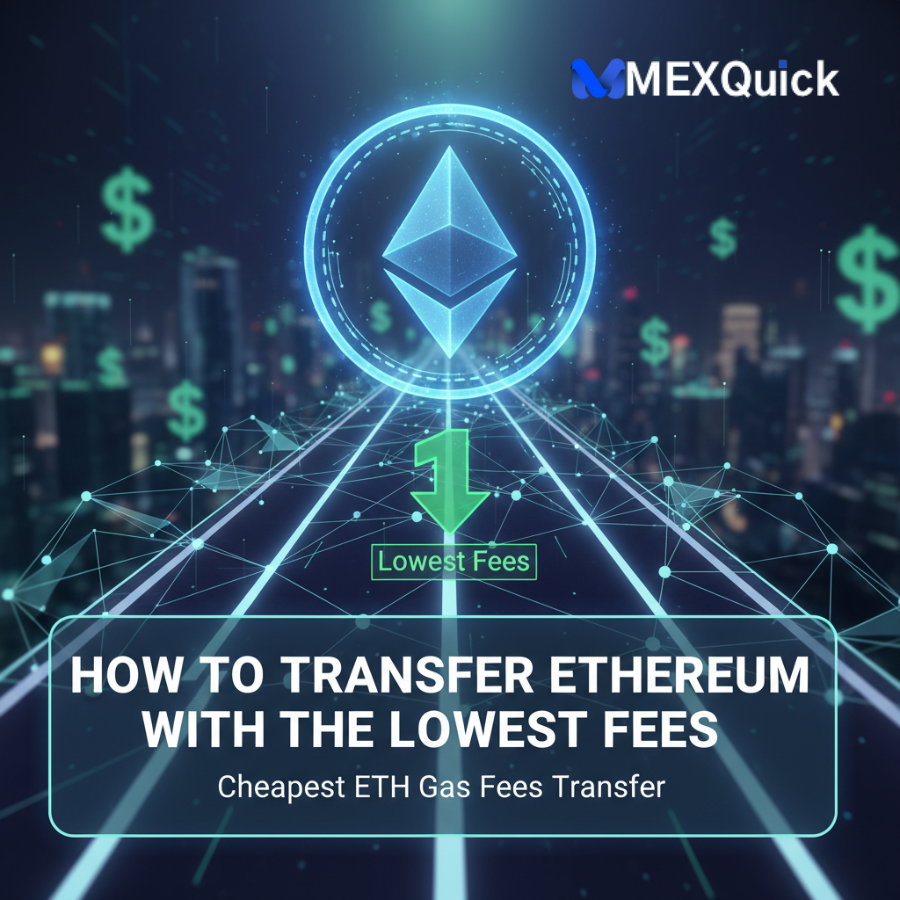
Let me guess: you’re about to send some ETH to a friend, an exchange, or a new DeFi protocol. You pull up your wallet, enter the amount, and your stomach drops. The network fee is almost as much as you’re trying to send! You feel stuck—pay the outrageous fee or don’t make the transfer at all.
I’ve been there. And after watching thousands of dollars get eaten by unnecessary ETH gas fees transfer, I dedicated myself to finding a better way. The good news? You don’t have to overpay.
In this guide, I’m going to show you the inside tricks and strategic methods I use daily to find the cheapest way to send Ethereum. You’ll learn how to time your transactions, leverage new technology, and keep more of your hard-earned crypto. Let’s dive in.
Understanding the Enemy: What Determines Your Ethereum Transfer Fee?
Before we can slash your costs, you need to know what you’re fighting. Your total fee is a simple equation: Gas Units * (Base Fee + Priority Fee).
The Three Levers You Can Pull
- Gas Units: The amount of computational work needed. A simple ETH transfer always uses 21,000 units—this is fixed. Complex smart contract interactions use more.
- Base Fee: The minimum price per unit of gas set by the network. This is non-negotiable and is burned. When the network is congested, this price skyrockets.
- Priority Fee (Tip): A small tip (in Gwei) you add to incentivize a validator to include your transaction faster. This is your main tool for saving money if you’re patient.
The 5 Most Effective Strategies for Low-Cost ETH Transfers

Forget guessing. Implementing even one of these strategies will save you money. Using them together will transform how you interact with Ethereum.
1. Master the Art of Timing (The Easiest Win)
Ethereum has rush hours, just like a city. By avoiding them, you can often save 50-80% on your ETH gas fees transfer.
- When to Transact (Low Fees): Evenings and nights in North America (after 9 PM EST), and especially on weekends (Saturdays and Sundays are typically cheapest). Major US holidays are also great.
- When to Avoid (High Fees): Weekdays from 9 AM to 5 PM EST, coinciding with the US stock market open. This is when institutional and retail activity peaks.
- Pro Tip: Use a gas tracker like the one on Etherscan or CoinGecko. Don’t transact when the gas price is colored “red” or “high.” Wait for it to dip to “green” or “low.”
2. Use Layer 2 Networks (The Game-Changer)
This is, hands down, the most effective method for finding the cheapest way to send Ethereum. Layer 2s (L2s) are networks built on top of Ethereum that batch transactions, slashing costs for everyone.
- How it Works: You bridge your ETH to an L2 once (which involves one mainnet fee). After that, sending ETH on the L2 costs pennies instead of dollars.
- Top Networks to Use:
- Arbitrum & Optimism: Leading “rollup” networks. Fees are often under $0.10.
- Polygon PoS: A popular sidechain. Transfer fees are typically $0.01-$0.05.
- Base: Coinbase’s L2, which is rapidly gaining adoption.
- Actionable Step: If you frequently send to someone who also uses a crypto exchange like Coinbase, send via Base. The recipient can bridge it to their Coinbase account easily and cheaply.
3. Manually Set Your Gas Limit and Priority Fee
Don’t let your wallet auto-choose “high” priority. For a simple ETH transfer, you have more control.
- Gas Limit: For a standard send, lock it at 21,000. Wallets sometimes overestimate this, but it’s a fixed cost.
- Priority Fee: Check the current “low” priority suggestion on a gas tracker. If you’re not in a hurry, set your tip to the low end (e.g., 0.5 – 1 Gwei). Your transaction might take 10-30 minutes instead of 15 seconds, but you’ll save a significant amount.
4. Explore Alternative Transfer Methods
The crypto ecosystem is innovating fast. Some methods bypass the public mempool entirely.
- Exchange Transfers: If you and the recipient both have accounts on the same exchange (e.g., Binance, Coinbase, Kraken), transferring between them is often free and instant. It never touches the blockchain.
- Gasless (Meta-Transactions): Some advanced dApps and services sponsor gas fees for their users. You sign the transaction, but a “relayer” pays the gas cost. Keep an eye on services like Biconomy that facilitate this.
5. Consider a Different Chain (The Nuclear Option)
If the absolute lowest cost is your only goal and Ethereum compatibility is key, consider using a different chain entirely.
- Solana (SOL): Transaction fees are a fraction of a penny and settlement is lightning-fast.
- Avalanche (AVAX) C-Chain: Fees are typically sub-$0.10.
- The Caveat: This requires the sender and receiver both to be on the same, non-Ethereum network, which limits its use case.
Conclusion: Your Blueprint for Cheaper Ethereum Transfers
You no longer have to be a victim of high gas fees. You have the tools and knowledge to take control. Let’s recap your new action plan for the cheapest way to send Ethereum:
- For Ultimate Savings: Move your funds to a Layer 2 network like Arbitrum or Optimism and conduct all your frequent transfers there.
- For Mainnet Transfers: Time your transactions for weekends or late nights and manually set a low priority fee.
- For Specific Cases: Use internal exchange transfers when possible for a feeless option.
